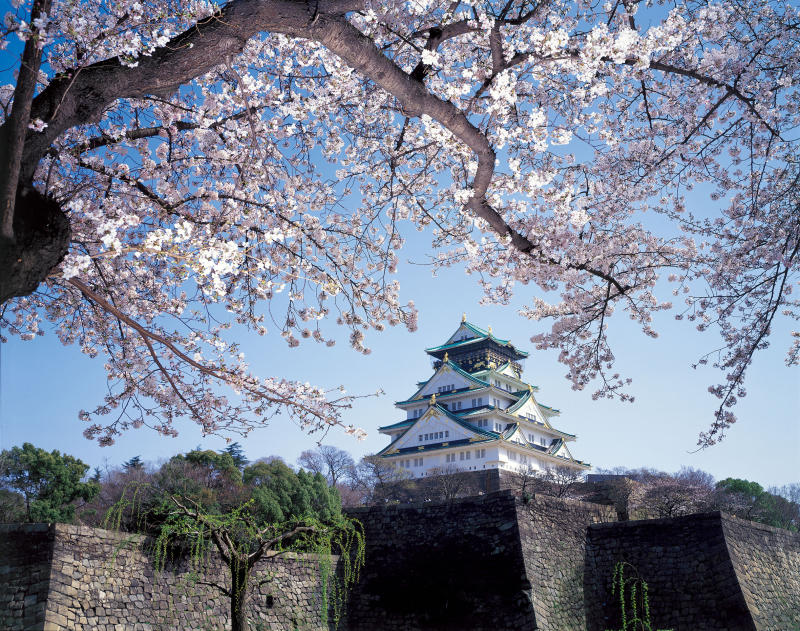Osaka is Japan's new tourist hot spot for Asian visitors
Sign up now: Get insights on Asia's fast-moving developments

The sakura blossom season at Osaka Castle Park in Japan.
PHOTO: OSAKA CONVENTION & TOURISM BUREAU
Follow topic:
TOKYO (BLOOMBERG) - Amid the gloom and struggle that Osaka has gone through in recent years, a tourism boom has been an unexpected boon for Japan's gritty second city.
The commercial roots and boisterous and friendly people of Osaka and the surrounding Kansai region provide a contrast to the relative coolness and formality of Tokyo that's winning favour with tourists from Northeast Asia.
The boom is boosting the local economy. Duty-free sales at department stores in the region were up almost 60 per cent in the first eight months of this year from the same period in 2016, according to the central bank.
The area's relatively high unemployment rate has dropped considerably, to 4 per cent last year, while the number of companies in Osaka grew 16 per cent in the 12 months through March, faster than in Tokyo or across the whole nation.
While Japan as a whole has benefited from a massive increase in tourism recently, it's especially pronounced in Osaka. Almost 10 million overseas tourists visited the city in 2016, a 363 per cent jump over five years, versus the 188 per cent increase seen nationally.
The city is popular with tourists from Asia, partly due to increased flights by low-cost carriers, such as Spring Airlines Co. of China and Jeju Air Co. of South Korea. This year looks to be another record, with 5.3 million visitors in the first six months of 2017, according to the city's tourism office.
Within Osaka itself, the southern part of the city around Shinsaibashi is attracting many people. The Daimaru department store in Shinsaibashi sold 11 billion yen (S$132 million) of duty-free goods in March-August this year. That was 28 per cent of all its sales and more than the combined total of duty-free sales at the company's 14 other stores in Japan.
"This inbound tourism has brought a growth chance to sectors such as the retail and restaurant business, which were shrinking due to population decline," said Kimihiro Etoh, a Bank of Japan executive and manager of the Osaka branch.
Osaka was traditionally the merchant capital of Japan, with many businesses in the early-modern Edo period based there.
The merchant spirit and tradition of bargaining is one of the things that Chinese probably find attractive, according to Xiaoxiao Liu, a Shanghai-born economist at Mitsubishi Research Institute in Tokyo.
"Chinese tourists aren't just looking to to buy stuff anymore, they want to have experiences while spending money. And on that point, Osaka is totally more fun," she said.
The whole shopping district of Shinsaibashi is entertaining, according to Masahisa Maeda, the head of the area's shopkeeper's association.
You can eat while walking down the street, "talking to people in shop and stalls, and watching them cook before your very eyes," he said.
"Osaka has food, culture and shopping," said 67-year old Mok Cheong Seng from Macao, while visiting the city recently for the seventh or eighth time. Her son Peter Lee, who was traveling with her, said: "Tokyo's too busy, but you can relax in Osaka."
The city plans to apply to host the 2025 Expo, and is also looking to host the first casino resort, when these are legalized in Japan, which would increase its appeal to Asian tourists.

